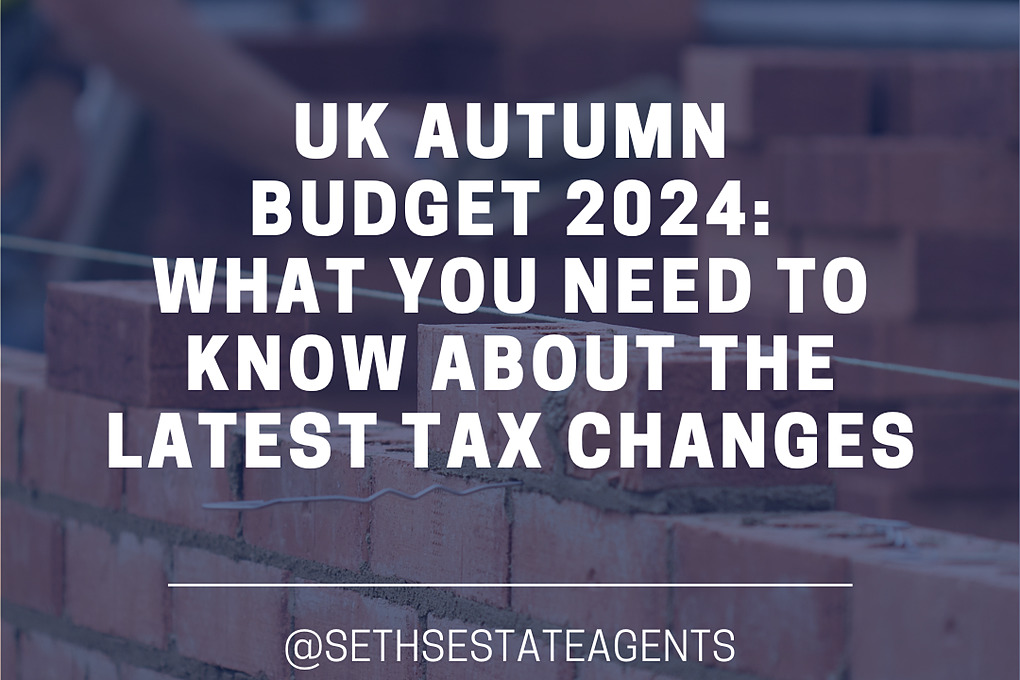UK Autumn Budget 2024: What You Need to Know About the Latest Tax Changes

- Nov 2nd 2024
The UK government’s 2024 Autumn Budget, labelled as a “Budget for Growth,” introduced substantial tax reforms, including higher National Insurance Contributions, adjustments to Inheritance Tax, and significant changes affecting Capital Gains and Business Property Relief. These updates aim to close the fiscal gap but come with implications for businesses and individuals. Here’s a closer look at the major changes and what they mean.
1. Increased Financial Burden on Employers
- National Insurance Contributions (NICs) Changes: Starting April 2025, employers will face a rise in NICs. The rate will increase from 13.8% to 15%, and the NIC threshold will drop from £9,100 to £5,000. This dual adjustment raises costs per employee by around £615, putting pressure on many small to medium-sized enterprises (SMEs). Although some smaller businesses may benefit from the Employment Allowance (which rises to £10,500), the overall impact is considerable.
- Example: For an average employee earning £34,000, the NIC increase will cost employers an additional £914 per year (or £686 after Corporation Tax Relief). For a company with 20 employees, this equates to an added cost of £13,720 annually after relief.
- National Minimum Wage (NMW) Increase: To support wage growth, the government is raising the NMW by 6.7% for workers aged 21 and above, reaching £12.21 per hour from April 2025. Younger workers aged 18-20 will see a 16.3% increase, aligning with a longer-term strategy to harmonise wages across age groups. While good for workers, this could be challenging for businesses, especially those relying on younger, part-time staff.
2. Income Tax Freeze: Fiscal Drag Effect
- Frozen Income Tax Thresholds: In keeping with their pledge not to increase income tax rates, the government has instead frozen income tax thresholds until 2027/28, which could lead more taxpayers into higher brackets due to inflation. Known as “fiscal drag,” this approach gradually raises revenue without directly increasing tax rates, though it means an increasing tax burden on middle-income earners as wages adjust to inflation.
3. Capital Gains Tax Adjustments
- Rate Changes for Capital Gains: The Capital Gains Tax (CGT) rates have increased but not as steeply as some anticipated. The lower rate is now 18% (up from 10%) and the higher rate is 24% (up from 20%), effective immediately. These rates impact gains from assets like shares or other investments but remain unchanged for residential property gains.
- Business Asset Disposal Relief and Investor’s Relief: Business Asset Disposal Relief (BADR) allows for a reduced CGT rate on certain business disposals up to £1 million in lifetime gains per individual. While BADR remains unchanged, Investor’s Relief lifetime limits have been cut drastically, dropping from £10 million to £1 million. For business owners, this is a prompt to consider exit strategies sooner, as CGT will increase to 14% for both BADR and Investor’s Relief from April 2025 and 18% from April 2026.
4. Inheritance Tax (IHT) Changes
- Unspent Pension Funds: From 2027, unspent pensions will now be included in estate valuations for IHT purposes. This reform, expected to impact around 38,500 estates, signifies a major shift in inheritance planning. Whereas previously pensions could be held to reduce IHT liability, the inclusion of these funds in IHT calculations may encourage individuals to draw on pensions earlier, despite income tax implications.
- Freezing Nil Rate Bands: The nil rate band for estates, set at £325,000 with an additional £175,000 for residential property left to descendants, remains frozen until 2030. As property values increase, more estates will surpass these limits, further widening the IHT base.
- Business and Agricultural Reliefs: From April 2026, these reliefs will be capped at £1 million, with excess assets receiving only 50% relief. This change requires business and estate planners to rethink their strategies, as high-value agricultural and business properties will face increased tax burdens.
5. VAT Changes and Education Sector Impact
- Private School Education VAT: Effective January 2025, private school tuition will be subject to 20% VAT, potentially raising tuition costs. This change may cause some families to switch to state schools, affecting the private education sector’s enrolment and potentially straining state school resources.
- Electric Vehicles (EVs): Notably absent from this budget is any reduction in VAT for EV charging—a move long advocated to support the transition to greener energy. The failure to address this could mean continued high costs for consumers as the UK works to phase out fossil-fuel vehicles.
6. Increased HMRC Compliance Focus
- New Compliance Staff: To improve tax collection, HMRC is onboarding an additional 5,000 compliance officers and 1,800 debt management staff. This move signifies a stronger enforcement of tax obligations, especially for SMEs, as increased audit frequencies are likely.
- Employee Ownership Trusts (EOTs): EOTs have become a popular exit strategy, providing tax advantages for employees acquiring company ownership. New qualifying criteria for tax-free treatment on share disposals mean that only genuinely commercial transactions will benefit, which could make this option less attractive for some business owners.
7. Implications for Non-Domiciled Individuals
- End of Remittance Basis for Non-Domiciled Individuals: Beginning April 2025, the remittance basis of taxation will be abolished, impacting UK residents who retain their “permanent home” overseas. This means these individuals will no longer be able to avoid UK taxes on foreign income and gains. For those planning to become UK residents, there will be a new “Four-Year Foreign Income and Gains (FIG) Regime,” offering temporary relief from UK taxes on foreign income for the first four years.
- Temporary Repatriation Facility (TRF): To incentivise repatriating foreign gains to the UK, the government introduced a TRF, allowing foreign income to be brought into the UK at a reduced tax rate. Available until 2027/28, this facility may benefit previous remittance basis users who wish to regularise their UK tax status.
Conclusion: What’s Next for UK Taxpayers?
The Autumn Budget of 2024 signals major shifts in the UK’s tax landscape, with significant implications for businesses, high-net-worth individuals, and everyday taxpayers. Whether you’re a business owner facing rising NIC costs or an individual planning your estate, understanding these changes is crucial.
Navigating the complexities of this budget may require revisiting tax strategies, estate planning, and payroll processes to mitigate the impacts. For guidance tailored to your specific circumstances, consulting with a tax adviser could prove invaluable in maximising your tax position amidst these changes.








